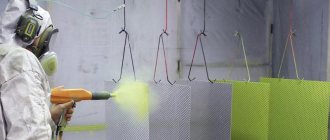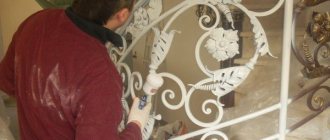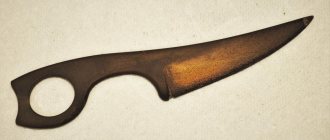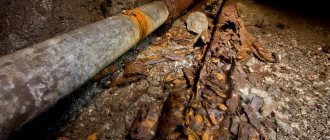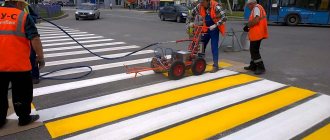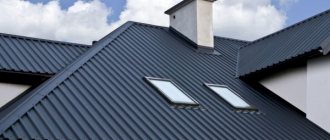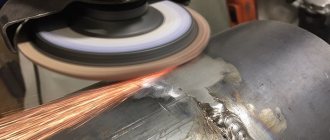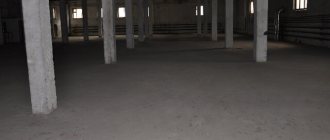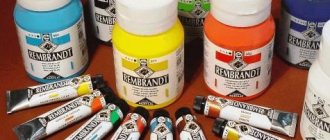Iron and steel are the materials from which the skeleton of modern technological civilization is made. But - alas! — and the steel foundation of our civilization has its own weak spot. It is called corrosion, from which iron and steel do not have the natural protection that the oxide film provides for many non-ferrous metals - tin, zinc or aluminum.
Steel needs protection from corrosion - and the best protection for it is galvanizing. (or galvanized). Galvanized sheets will last much longer than regular steel sheets.
Why zinc?
First of all, because zinc is quite common and inexpensive, it itself is practically resistant to corrosion, melts at a not very high temperature (about 420 degrees, which is much lower than the melting point of iron), and has acceptable strength. And at the same time - what is important! - has a stationary electric potential of -0.76 V, that is, much more negative than that of iron.
Due to this property, zinc, even if the integrity of the coating is damaged and under the influence of electrolytes, will play the role of an anode in the resulting electrochemical reactions. That is, it will slowly dissolve, thereby protecting the steel base of the structure from electrochemical corrosion. In general - give us zinc coatings! Just in what ways to apply them? This is a rather interesting question, since there are several such methods - and each of them has its own pros and cons. Let's consider them...
What galvanizing methods are there?
There are six main methods of galvanizing metal:
- hot-dip galvanizing using the Cook-Nortman method;
- Sendzemir hot-dip galvanizing method;
- galvanic galvanizing;
- thermal diffusion galvanizing;
- thermal spraying of zinc;
- cold galvanizing.
Now, let's take a closer look at each method separately.
Hot-dip galvanizing using the Cook-Nortman method
Let's start with the physics of this method: a bath of molten zinc is taken and the finished metal product is immersed in it. But before immersing the product, it is first degreased, scale and rust are removed, washed to remove residual acids, and then dried and flux is applied. Next, they begin to immerse the metal product in a bath of molten zinc at a temperature of 480 degrees Celsius. The next step is to adjust the thickness of the coating and dry it. After everything has been done, we make sure to control the quality and thickness of the product.
Each method has its pros and cons. Let's consider them too.
Pros : wear resistance and durability of the protective layer. For example, if you add tin to molten zinc, it will become shiny; and if it is aluminum, then the protective layer will be able to bend and stretch (during deformation).
Disadvantages : it is always necessary to remove scale and acid residues, since molten zinc only reacts to a clean metal surface.
Sendzemira hot-dip galvanizing method
The physics of this method is as follows: a strip of steel is taken, previously cleaned and furnace annealed, it enters along roller guides into a container with molten zinc. Then, having passed through this liquid metal, the strip is covered with an even layer of zinc on all sides. Further, at the exit from the container, the strip, which has already turned into a roll, is processed in a system of air knives. Under high pressure, compressed air appears, which removes the excess volume of zinc solution and cools the steel. At the finish line, processing, drying, and winding are already underway. Also, in short, this method is called the method of galvanizing rolled metal. The positive and negative aspects of this method are as follows:
Pros : thick coatings can be applied; uniformity, durability, plasticity of the coating; 100% protection of smooth rolled products with a thickness of 0.5 to 3 mm; productivity is high.
Cons : increased strength. This is not very convenient, when the metal is annealed, the strength becomes quite high and this complicates the work. This definitely needs to be taken into account.
Galvanic galvanizing
Here everything is much simpler: you take a galvanic bath, the electrodes of which are connected to a direct current network (not alternating current! this is important). Cathode – workpiece, zinc anode. As soon as voltage is applied to the electrolyte, charged particles begin to move, thereby causing the deposition of zinc ions onto the metal being coated. It must be remembered that each metal has its own electrolyte composition and current density. This method is often called electrochemical galvanizing. Let's move on to the pros and cons of this method:
Pros : large selection of protective coating colors; the thickness of the deposited zinc can be adjusted with an accuracy of 96%; performance at the highest level
Cons : zinc is an electronegative metal. When it is deposited on the cathode, hydrogen is released, which penetrates into the coating formed. This is good for “thick” metals, but dangerous for thin-walled ones. Therefore, each metal has its own composition of electrolytes, using additives that increase the buffer capacity. Also, when coating a metal with zinc, special substances are introduced into the electrolyte bath to increase electrical conductivity.
Thermal diffusion galvanizing
For this method, it is desirable to know and understand the thermodynamic laws (isobaric process, isothermal process, isotope process, isochoric process). The essence of this method: take a drum chamber into which the zinc mixture and cleaned parts are placed; the heating range is selected, the temperature in the capsule is raised and its rotation begins. It should be remembered that when heated to 500 degrees Celsius, zinc first goes into a liquid state and then into a gaseous state, since zinc’s own melting point is 419 degrees Celsius. Further, zinc particles penetrate into the surface layer of steel, concentrate and form a complete and uniform coating over the entire surface. One cycle is approximately 3 hours. Now let’s look at the 2 sides of the coin of this method:
Pros : great for coating small parts of different shapes (with threads, geometries, etc.); uses zinc economically; average performance.
Cons : limited size of processing parts. They must be strictly placed in the drum chamber.
Gas thermal spraying of zinc
First, we’ll tell you the general meaning of this method, and then the physics itself. In general, what kind of method is this, gas-thermal? For this method, zinc, which is present in the composition of the wire, is sprayed onto the surface of the product, which is processed in a gaseous environment. This technology is used when a zinc layer needs to be applied to “large” products and for which other treatments are not an option. And now the physics of the method. Its essence lies in the fact that particles of molten metal hit the surface that is being processed and thereby form a thin layer. Such a coating, in which there are many large pores, is well combined with the application of paints and varnishes.
Pros : ability to operate in aggressive environments (exposure to sea and fresh water, constant humidity, etc.).
Cons : only large parts/products are suitable for this method.
Cold galvanizing
The essence of this method is simple and logical: a special zinc-containing mixture is applied to the surface of the product to be treated (usually zinconol is used). Apply this mixture using a roller or brush. Using zinconol, you can obtain a protective layer on the metal surface, which contains 88-93% zinc. Most often, this method is used to cover the protective layer of pipes, power line supports, elements of railway tracks and others.
Pros : wide temperature range. Cold galvanizing of products is carried out in a wide temperature range and the resulting coating is characterized by good protection and elasticity.
Cons : a solvent is required for cold galvanizing; low resistance to mechanical stress.
To summarize: we have considered the metallophysics of metal; learned what corrosion, damage, and strength of metal are; described in detail six methods of galvanizing metal. Where in St. Petersburg can you order galvanizing of metal using any of the six methods presented? Everything is very simple: the best company in the city, which has already “eaten the dog” in this procedure, will help you with this - “SPbZKI”. From us you can order galvanization of parts and entire metal structures that are used in various fields of production.
If you really want to protect the surface of your metal product, you can safely call us at the numbers provided on the website to order galvanizing of your product. We have affordable prices and hundreds of positive reviews. So, we are waiting for your call.
Hot galvanizing
This is, at first glance, the simplest and most reliable method of creating a zinc film on cast iron and steel products: these objects are simply immersed in molten zinc, and then taken out already coated with a layer of zinc 40 to 80 microns thick - that is, quite dense and wear-resistant.
However, not everything is so simple: in order for the zinc film to reliably “catch” on the surface of ferrous metal, this surface must be thoroughly cleaned and fluxed (that is, coated with a composition that should prevent it from oxidizing before contact with molten zinc and ensure reliable adhesion zinc film).
It should be borne in mind that molten zinc hardens quite quickly and can therefore form sagging up to 1 mm. thick, which is undesirable in cases where there is a thread on the surface of galvanized products. In addition, the technology itself imposes restrictions on the size of the products that we want to galvanize in this way - they cannot be larger than baths of molten zinc (and they cannot be very large by definition).
Metal galvanization
In principle, the technology in all methods is the same: a thin layer of zinc is applied to the metal surface and it is covered with a film, protecting it from mechanical damage. It is zinc that protects the metal surface from all loads and damage, and galvanizing the metal:
- a very inexpensive procedure;
- safe for any properties (including mechanical) of manufactured parts;
- It is possible to set different thicknesses.
Zinc is the most accessible metal that provides electrochemical protection for iron. Therefore, galvanizing is often used in the following areas: construction, mechanical engineering and others. Wear resistance is the main component of this procedure. It is this that determines the durability of the metal. For example, if a zinc-coated metal is exposed to atmospheric components, it deteriorates slowly, forming a thin layer of a protective film. It is this that protects the deepest layers from corrosion, it prolongs life and is wear-resistant compared to other products. Typically, the following alloys are suitable for galvanizing: copper, aluminum, cast iron, steel and others.
Cold galvanizing method
Unlike hot galvanizing, its cold version has nothing to do with the size of the parts and surfaces being galvanized, since it consists of applying electrolytic solutions of zinc in various volatile liquids to them. Such solutions (galvanol, cynotane, cynotern, zincnol) are applied to the steel surface from a spray bottle: the solvent dries, but the zinc coating remains - and it “sits” on the steel surface very reliably, with high adhesion. In this case, the surface to be coated does not need to be fluxed; it can simply be cleaned of rust and dirt.
The cold galvanizing method is good for its simplicity
and suitability for outdoor work. But the appearance of steel coated in this way will simply be a matte gray without a metallic sheen.
Therefore, cold galvanizing is best used as a “paintable coating”.
Features of the galvanizing procedure and the main methods of metal protection
Metal corrosion, or the process of its oxidation, is especially intensified in conditions of high humidity. To prevent corrosion of metal products, protective coatings are applied to them. Galvanizing of metal is considered one of the most reliable, since zinc takes on the effects of aggressive environments. Galvanizing provides not only barrier, but also electrochemical protection of the metal. During the reaction, an oxide layer appears on the surface of the part, which provides additional protection.
After mechanical destruction of the coating, the effect of the protective layer ceases. There are various types of metal galvanizing, many of them require complex and expensive equipment, but some can also be used at home.
Galvanized pipes
Galvanizing technology was first mastered in France in the 18th century and further developed in England. Domestic scientists Jacobi and Mendeleev made a great contribution to improving the process. Today, galvanizing metal is one of the most affordable ways to protect against corrosion.
Galvanic galvanizing method
But the galvanic galvanizing method gives the galvanized surface an extremely attractive appearance.
It consists in the fact that current flows through a bath of electrolyte, with zinc plates serving as the anode and steel products as the cathode. Under the influence of current, zinc dissolves in the electrolyte, and its ions are deposited on the iron. The result is a thin (from 4 to 20 microns) film that not only protects the steel from corrosion, but also gives the surface an aesthetic appearance. The surface coated with galvanic zinc can acquire (depending on its thickness) a blue-blue, light gray or matte white metallic sheen. The main advantages of such a coating will be the uniformity of its thickness over the entire surface to be coated.
But these advantages also come with their own disadvantages: a thin and beautiful galvanic coating will not be resistant to abrasion, and an increase in its thickness will be fraught with the fact that the steel during the galvanizing process can also acquire the so-called. "hydrogen fragility". However, galvanic galvanizing. Due to its low cost, it is often used for anti-corrosion protection of various types of fasteners, metal products and decorative elements.
Areas of application of galvanized structures
- Construction work of various profiles: road, bridge, construction of buildings and structures.
- Oil production and oil refining.
- Gas production and gas processing industry.
- Energy sphere.
- Connection.
- Automotive industry.
- Agriculture and other areas.
The method is applicable for structures that are operated under different conditions
- Supports of high-voltage transmission lines.
- Supporting metal structures of bridges and pipelines.
- Various equipment.
- Valves and locks of hydraulic systems.
- Frames of houses and fences.
- Piles supporting various types of floors.
- Stair steps and flights.
- Pipes of various systems, including ventilation.
- Ship hulls.
- Monuments and architectural structures.
Thermal diffusion galvanizing
The main disadvantage of galvanic galvanizing, “hydrogen embrittlement,” is avoided by thermal diffusion galvanizing technology.
It is based on the fact that zinc, under certain conditions, can evaporate from the surface of a zinc-containing powder and penetrate into the surface layers of iron, resulting in the formation of a complex zinc-iron alloy.
Such diffusion becomes possible when
high (from 290 to 400 degrees) temperature and the presence of electrical potential, at which steel products act as an anode.
The thermal diffusion process is carried out in a rotating container at reduced pressure (0.1 atmosphere) in a reducing hydrogen atmosphere. Thermal diffusion galvanizing of each batch of fastening hardware requires from 90 to 180 minutes.
As a result, these parts will acquire a mouse-gray color - but with it, increased surface strength and excellent corrosion resistance (3-5 times better than with galvanic galvanizing and one and a half to two times better than with hot-dip galvanizing).
In this case, the uniformity of the coating will be ideal, and there is no point in talking about the adhesion of such a coating - it simply “merges” with the ferrous metal, so it is simply impossible to separate it from it. Of course, the appearance of hardware galvanized in this way does not bring much aesthetic pleasure, but bolts, nuts, springs and screws are not required to be particularly beautiful.
Thermal-diffusion galvanizing has only one drawback, but it is significant - due to the nature of the technology, it can only be used for small-sized objects.
Galvanizing services in Moscow, advantages of contacting our company
But what if processing is needed not for two or three parts, but for a serial batch, and it needs to be done in the shortest possible time? Our workshop offers a full range of metal galvanizing services: from preparatory work to shipment of finished products to the customer’s warehouse. Contact us and we will:
- We will promptly respond to your request,
- We will make a discount for volume,
- We will carry out high-quality galvanizing in Moscow in compliance with all technological requirements,
- We will provide control at all stages of processing,
- We will complete the order strictly by the time specified in the contract,
- We will provide a guarantee for the work performed.
